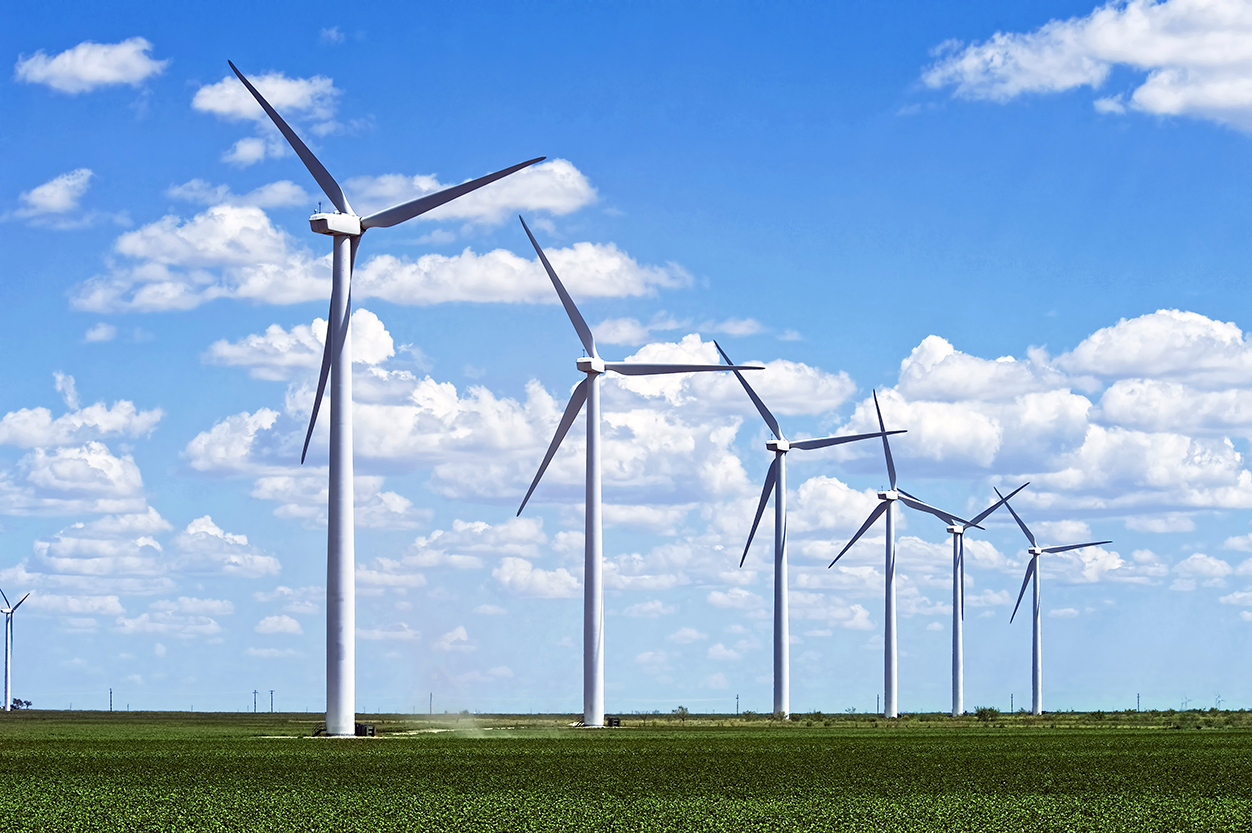Tilting Windmills: Decommissioning Wind Farms

If you have ever driven through the Texas Panhandle, no doubt you have come across a wind-turbine or two. For instance, the Roscoe wind farm, located about 45 miles south-west of Abilene, is the largest onshore wind farm in the world – employing 627 turbines over 100,000 acres of land, stretching through Mitchell, Nolan, and Scurry counties.
Although the Roscoe wind farm is just over 11 years old, having been put into operation in 2009, other wind-turbines, like ones located at the San Gorgonio Pass wind farm in California that started development in the 1980s, are nearing the end of their life expectancy. What would it take to decommission a wind farm as massive as Roscoe’s?
With more than 720,000 tons of blade material set to be disposed of over the next 20 years, the United States faces a massive waste problem – quite the conundrum given the fact that these wind turbines were meant to fight climate change, not aid it. There are many hidden consequences with taking down wind farms, some of which are discussed below.
Costs
The costs to decommission just a single wind turbine are exorbitant. For instance, back in 2009, it cost around $445,000 per turbine to decommission the Nobles Wind facility in Minnesota. So, with inflation, a decade later, it will cost about $532,000 per turbine for each of the 134 turbines at the wind farm, bringing the total cost of decommissioning the Nobles project to $71 million. The Nobles Wind facility is not the only six-figure decommissioning project either. In the same state, at the Palmer’s Creek Wind facility in Chippewa County, Minnesota, it will cost around $7,385,822 to decommission its 18 wind turbines, a cost of $410,000 per turbine.
Once you’ve got the decommissioned blades down, the work (and headache) is only half over. Decommissioned blades are notoriously difficult and expensive to transport. The blades range from 100 to 300 feet long and need to be cut up at the wind farm location before getting trucked away to their final resting place (whether a landfill or re-purposed for something else) on specialized, expensive equipment.
Logistics
The logistics behind decommissioning wind turbines can be very complicated. In one example, the Nobles Wind facility, discussed above, has an extensive underground collector cable system, laid at a depth of four feet, connecting the turbines to a central substation. For all practical purposes, these underground wires need to be removed when the turbines come down, which is quite the feat.
Further, once the turbines are decommissioned, additional restoration activities include the removal of all physical material and equipment related to the specific turbine, sometimes to a depth of 48 inches. In most cases, the concrete foundations used to anchor the wind turbines, can be as deep as 15 feet. The concrete bases are difficult to remove entirely. To make things worse, the older rotor blades, like the ones installed in the 1980s, contain glass and carbon fibers that give off dust and toxic gases – an environmental nightmare.
Environment
As discussed above, the turbine blades must be cut up on site and then transported to landfills, among other destinations. However, many landfills do not have the capacity to accept the blades and even if they do have any room, they may not have equipment large enough to crush them. One solution is cutting the blades into three pieces and then stuffing the two smaller sections into the third, which is a cheaper option to renting expensive crushing machines.
While most of a turbine can be recycled or re-used on another wind farm, there are hundreds of thousands of tons of turbine material that cannot. Most of the problem relates to the fact that older turbines are made from composite materials like glass fiber. Newer blades are made from carbon fiber – a readily recyclable material. Composite materials are light and strong, but they are also very difficult to recycle.
One strategy to recycle these composite materials is through pyrolysis, which is decomposition brought about by high temperatures. However, it takes significant amounts of energy to activate the pyrolysis, which limits its environmental usefulness.
Europe is finding inventive ways to recycle the blades. For example, in Rotterdam in the Netherlands, unwanted blades have been used to construct a 1,200sq children’s playground that includes a slide tower, tunnels, ramps, and slides all made from five discarded wind turbine blades. Decommissioned blades have also been turned into another playground and outdoor seats in the Dutch city of Terneuzen, two bus stops in Almere, and a seat beside Rotterdam’s famous Erasmusbrug bridge.
Scientists and researchers across the world must continue to be inventive if we are to handle the flood of turbines going into retirement over the next few years.
Legal Disclaimers
This blog is made available by Gerstle Snelson, LLP for educational purposes and to provide general information about the law, only. Neither this document nor the information contained in it is intended to constitute legal advice on any specific matter or of a general nature. Use of the blog does not create an attorney-client relationship with Gerstle Snelson, LLP where one does not already exist with the firm. This blog should not be used a substitute for competent legal advice from a licensed attorney.
©Gerstle Snelson, LLP 2021. All rights reserved. Any unauthorized reprint or use of this material is prohibited. No part of this blog may be reproduced or transmitted in any form or by any means, electronic or mechanical, including photocopying, recording, or by any information storage or retrieval system without the express written permission of Gerstle Snelson, LLP.

